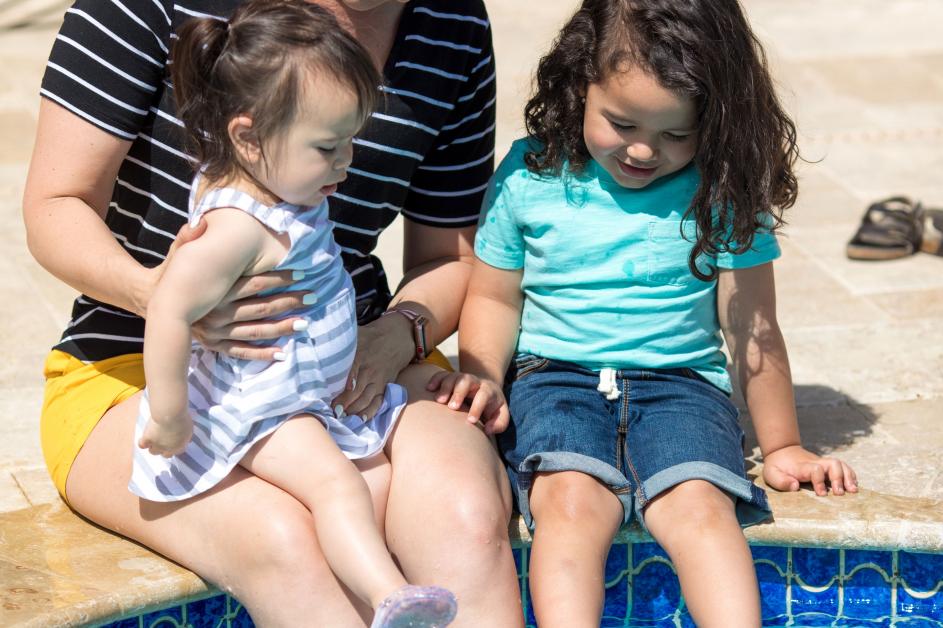
August is Drowning Impact Awareness Month. Prepare your kids to be safe around water, and keep the conversation going, with a simple water safety quiz.
You know a lot about what’s best for your child, but parents who really know it all, know drowning is 100% preventable. Yet, drowning remains the number one cause of unintentional death for children ages one through four and the second leading cause for children under the age of 14.
Safety measures go a long way towards preventing tragic accidents, explains Jessica Chamberlain, Chandler Aquatics professional and mother of two, but there’s no substitution for adult supervision. In fact, it’s the number one defense against fatal and nonfatal drownings.
Talk to your children about how to be safe in, on and around water to prevent a water-related emergency.
As early as six months, Chamberlain says, parents should begin helping kids view water safety as a standard safety measure, “like buckling up a seatbelt, or looking both ways before crossing the street. Just like child seat safety education has helped reduce the number of traffic fatalities among children, “we need to incorporate water safety conversations and habits into our daily lives.”
As a part of the City’s new #WaterYouDoing campaign, we’ve created a short, three-question quiz you can ask your kids, based on their ages, to get the conversation started and help them become knowledgeable on water safety.
Under 5

Start demonstrating water safety behaviors with infants as early as six months and continuously check for understanding as they grow. Most toddlers will respond to basic questions with non-verbal indicators such as shaking their head to signify understanding.
- Should you ever go near the pool without an adult? The answer is always “no.” Make sure to tell young children that an adult means a mommy or daddy, or a caregiver. An older sibling doesn’t count. This practice also holds true when swimming and playing around the pool. Adult supervision cannot be overstated.
- What happens if you fall in the pool? The goal should always be to find the nearest wall and exit the pool. Practice returning to the wall, holding onto the side of the pool edge and climb along until they are safely able to exit the pool.
- What would you do if your sibling or playmate fell in the pool? Calling for or seeking out help is critical. Children should never attempt to get in and rescue their friend or sibling, even if they are a good swimmer. Assure children that they will never be in trouble for going to get help, even if they were not supposed to be by the pool.
Under 14
- What are our family’s pool rules? Most kids can remember a simple set of rules. Make sure “never swim without an adult” is part of these rules. Rules should apply no matter if they’re at home, a friend’s house or elsewhere.
- How do you know someone needs help in a pool? A misnomer is that drownings are loud and entail violent splashing and yelling. In actuality, drownings are quiet and only take seconds. Teach children to recognize that if someone is under the water or unable to take a breath for more than 20 seconds as a potential water emergency.
- What would you do if someone needed help in the pool? Call for help. It’s important to teach children to get an adult and/or call 911 in an emergency. Showing your child how to help from the pool deck by reaching or throwing an object out to the person in trouble, but to never jump in to help, could save both their lives.
Keep the dialogue direct and specific to your water safety expectations.
You love them enough to keep them safe on land. Love them enough to keep them safe in and around water.



